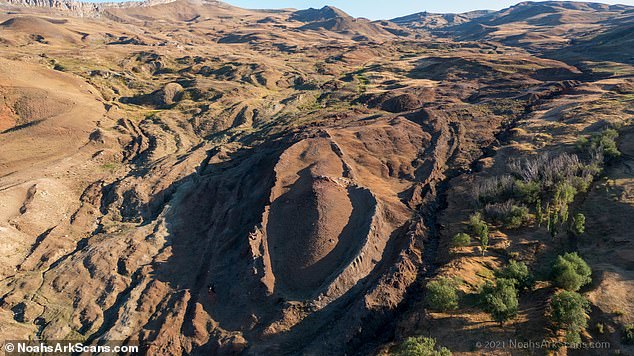A ship-shaped mound found two miles from the Turkish-Iranian border has sparked theories that “Noah’s Ark” may have been discovered.
New research by a team of archaeologists and scientists into the Durupinar Formation has caught the attention of those who believe the ship is buried beneath that site in eastern Turkey.
The scientists, called the ‘Mount Ararat and Noah’s Ark Research Team’, used new technology to analyze whether the soil has traces of human activity.
The samples collected date back to between 3,500 and 5,000 years, which appears to coincide with the biblical chronology of the flood.
Scientists also found marine materials in the soil, suggesting it may have been the resting place of Noah’s Ark, or at least used to be submerged in deep water.
A ship-shaped mound found two miles from the Turkish-Iranian border has sparked theories that “Noah’s Ark” may have been discovered.
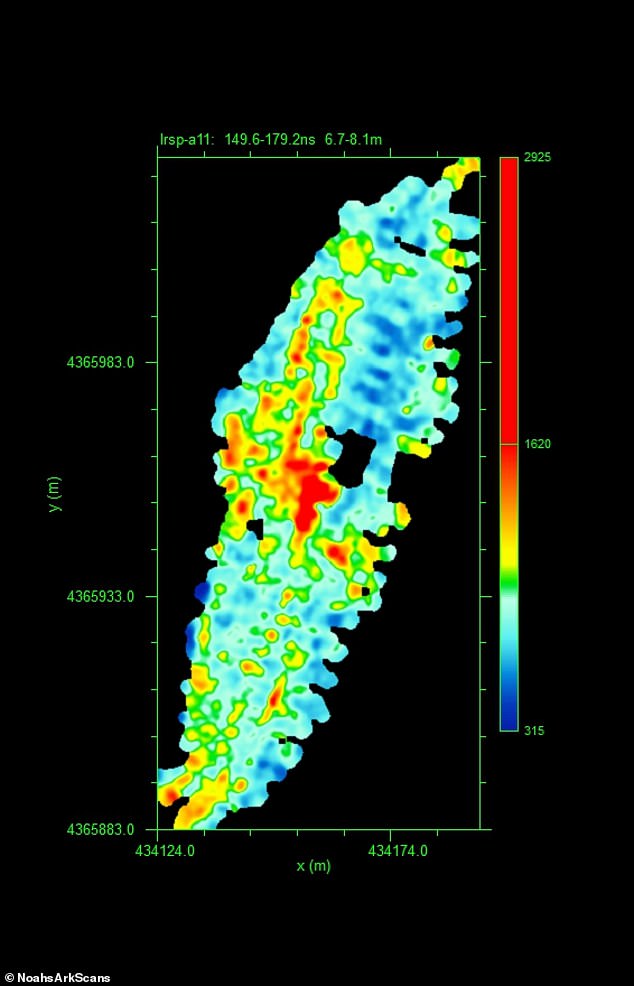
New research by a team of archaeologists and scientists into the Durupinar Formation has caught the attention of those who believe the ship is buried beneath the site.
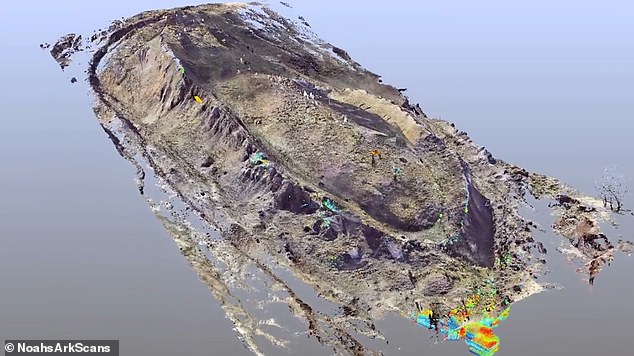
The scientists, called the ‘Mount Ararat and Noah’s Ark Research Team’, used new technology to analyze whether the soil has traces of human activity.
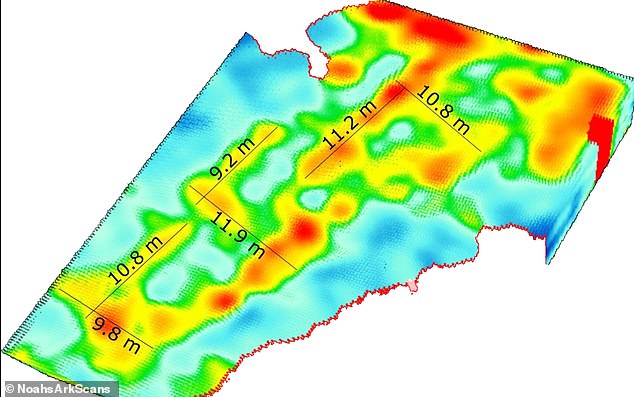
Satellite images of the Durupinar formation appear to show the dimensions of the vessel.
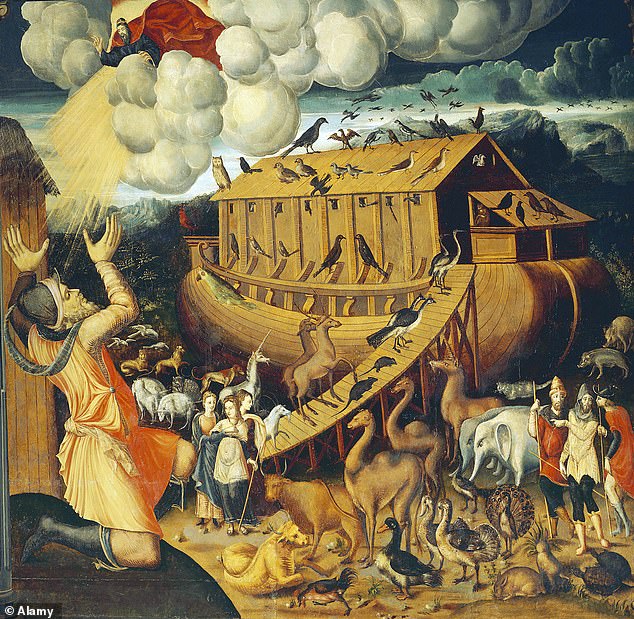
In the Bible, God orders Noah to build a huge ship, the ark, capable of saving himself, his family, and a representation of the animals of the world.
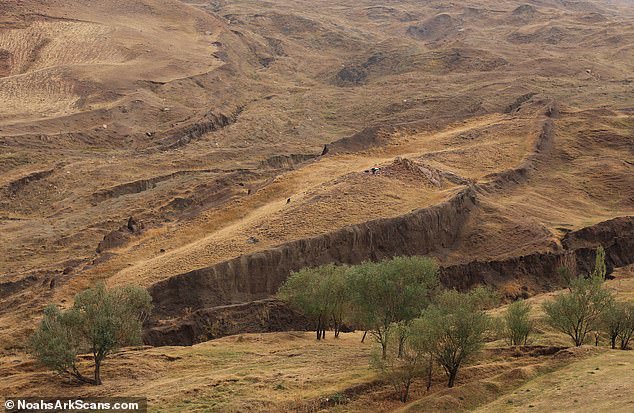
The Bible states that the ark came to rest in the “mountains of Ararat” in Turkey after a 150-day flood that drowned the Earth and every living thing on it that was not housed inside the wooden ship.
The Bible states that the ark came to rest in the “mountains of Ararat” in Turkey after a 150-day flood that drowned the Earth and every living thing on it that was not housed inside the wooden ship.
The geological formation located in the Doğubayazıt district of Ağrı has been a potential site since its discovery in 1956.
The mountain is the highest peak in Türkiye, is 16,500 feet high and is carved like an ark.
The vessel was said to measure “300 cubits, 50 cubits, by 30 cubits,” which translates to up to 515 feet long, 86 feet wide, and 52 feet high.
Satellite images of the Durupinar formation appear to show the dimensions of the biblical vessel.
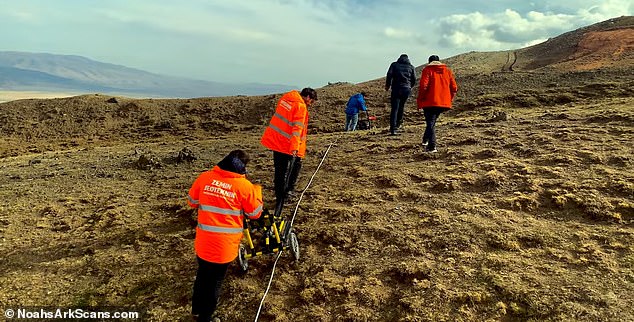
The first part of their work began in December 2022, when they collected 30 samples of rock and soil fragments that were analyzed by the ITU laboratory. In the photo, the team walks into the formation to collect rocks and soil.
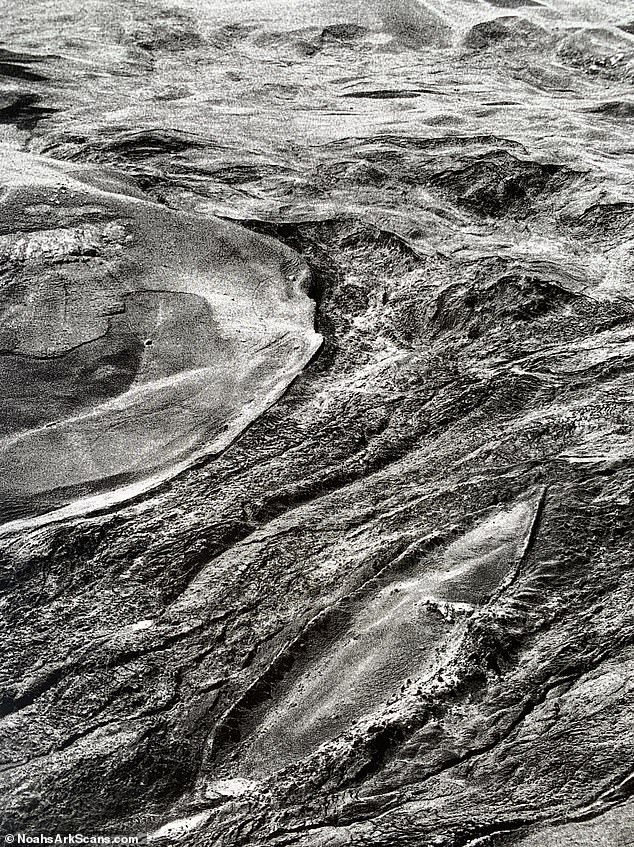
The geological formation located in the Doğubayazıt district of Ağrı has been a potential site since its discovery in 1956 (pictured)
A team of experts led by Istanbul Technical University (İTÜ), Andrew University and Ağrı İbrahim Çeçen University (AİÇÜ) have been working at the site, collecting samples that they believe are the key to confirming the biblical story.
Although it is considered a historical event, most scholars and archaeologists do not believe in the literal interpretation of the Ark story.
In the Bible, God orders Noah to build a great ship, the ark, capable of saving himself, his family, and a representation of the animals of the world.
Man’s wickedness and corruption spurred God’s vows to send a great cleansing flood.
Considering Noah the only righteous man worth saving, God orders him to build a great ship.
According to the Bible, when Noah has completed his task and God has sent “two of each type” of animals to the Ark, the waters of the flood rise until they cover all the mountains and life (except fish) is destroyed.


